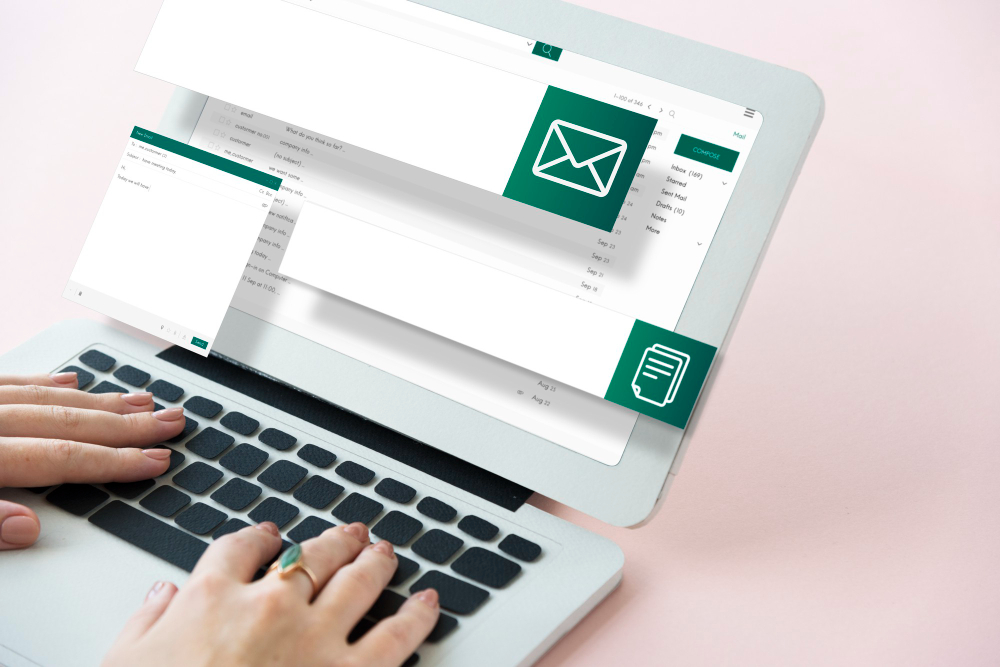How to Ensure 100% Compatibility with Mailchimp Newsletter Templates
Mailchimp is a one-stop solution that takes your emails from creation to execution with a drag-and-drop template builder. But simply bombarding your subscribers with emails doesn’t guarantee the effectiveness of your newsletters. You must also ensure that they look great across all devices and that the ESPs like Gmail, Outlook, Yahoo, and Apple Mail are all compatible.
We know how crucial email newsletters are for both small and large businesses to connect with their customers. That’s why on Mailchimp, one of the initial measures you need to take is – to make your Mailchimp newsletter templates 100% compatible. So, in this article, we will guide you through the process of creating spectacular newsletter templates, learning the factors that are responsible for compatibility, and the best practices you must follow. Let’s dive right in.
Understanding the Significance of Mailchimp Newsletter Templates
What is so special about Mailchimp newsletter templates? Why do we need them in the first place? Before your head starts to spin with these questions, I’ll answer them quickly to help you understand their significance. These templates are like blueprints for actual newsletters. They are ready-to-send designs where you only need to craft your message and tap the send button. Easy-peasy, eh?
Now, Mailchimp has a variety of templates that are used for different purposes and users’ needs.
- Basic templates: They are straightforward and easy to use. If you are new to Mailchimp, you can start from here because they need little to no customization.
- Themed templates require a bit more flair and offer different designs and styles. Customization gives your templates a smart look and feel with a touch of your brand’s personality.
- Code your own templates: This is for those with coding knowledge who want to design their email templates from scratch to finish.
Now, let’s take a look at factors that affect the compatibility of newsletters with Mailchimp templates.
Factors Affecting Compatibility
There are three key factors that affect the compatibility of your Mailchimp newsletter templates.
1. Design Elements: Fonts, Colors, Images, and Layout
Design elements are the building blocks of your newsletter. Fonts and typography set the base. Color palettes evoke emotions. Images grab instant attention. The layout ensures that everything fits together perfectly. So, what withholds compatibility? Consistency. Use the design elements wisely to create a consistent brand identity across all forms of communication and different channels. The idea is to make your newsletters look the same across all screen sizes and types, including PCs, tablets, mobile phones, etc. The better you optimize your images, the quicker your newsletter will open, thereby increasing the compatibility. The good thing is that Mailchimp helps you optimize your emails to fine details.
2. Responsiveness: Ensuring the Newsletter Looks Good on All Devices
In today’s fast-paced world, people open most of their emails on their smartphones. Thus, you must ensure your newsletters look good in all sizes. That’s where responsiveness comes in. Responsive designs automatically adjust the layout of your newsletters on the screen on which they are viewed. This ensures that the font sizes don’t get uneven, where users have to zoom in to read the texts. Eventually, your subscribers will love your emails because of their compatibility.
3. Integration with Mailchimp Features: Personalization Tags, Merge Tags, Dynamic Content, etc.
Another benefit of using Mailchimp’s platform to create your newsletter is that you can integrate other email features in just a few clicks without moving on to third-party integrations. You can personalize your emails by addressing your subscribers with their first names to make your newsletter sound more professional and personal. With merge tags, you can attribute dynamic content to your newsletter and use drip campaigns to show product recommendations based on your subscribers’ clicks and preferences. If your newsletter remains compatible with these features, your subscribers will experience fresh and relevant newsletters.
Now, let’s talk about the best practices that will help us achieve 100% compatibility with the Mailchimp newsletter templates.
Best Practices for Designing Compatible Newsletters
There are four best practices that we need to execute to design 100% compatible newsletters.
1. Choosing a Responsive Template
If you are new to Mailchimp and have zero coding experience, choose a responsive template to make life a little easier. There are many templates available on Mailchimp; choose the one that matches your branding and communication style. This will ensure that your newsletters open perfectly fine on all kinds of devices and screen sizes. With responsive design, you only need to curate your content, and your emails will be ready.
2. Keeping Design Elements Simple and Consistent
Less is more is an adage that proves true when discussing design. Keep your design clean and decluttered so that your text can be easily read with flinching eyes. Choose a straightforward layout to easily integrate other Mailchimp features into your newsletter. You must maintain consistency with fonts and colors that align with your brand across all channels, including social media and website. This gives your newsletters a polished and functional look.
3. Optimizing Images for Fast Loading Times
Let’s be honest. The attention span of users online has significantly declined. People take milliseconds to decide if they want to remain on a website or not and seconds to decide if they want to read an email. No one has time for slow-loading images. Thus, to keep your subscribers from bouncing off, you need to optimize your images and increase loading speed. You can compress image size without compromising on the quality of the image. Save them in the right formats, such as JPEG and PNG. Your subscribers will love the effort you take to put across a fast-loading newsletter.
4. Testing the Newsletter Across Different Devices and Email Clients
Lastly, never forget to double-check your newsletters before sending them across to your subscribers. You can try sending test emails to yourself and your team members and check if all the layouts, images, fonts, colors, etc., are on point. You also need to test your newsletters on different devices and email clients. Mailchimp also has a preview and testing feature that helps you resize your screen size to test your emails.
Advanced Testing Compatibility
If you want to strengthen your testing, you can test your templates on tools like Litmus. These tools offer detailed insights into how your newsletter will render in different inboxes and reveal any compatibility issues you might have missed. You can also test your newsletter templates on different email clients like Outlook, Gmail, Apple Mail, etc. Each email client handles HTML and CSS differently. So, one thing may look good on one email client and might not look good on another. But with advanced testing measures, you can ensure that your newsletter looks good no matter where they are viewed.
Key Takeaways
Remember that ensuring 100% compatibility with Mailchimp newsletter templates aims to offer our email subscribers a seamless experience. That’s why we must focus on every detail, from design elements to responsiveness and integration of Mailchimp’s features to execution. If you follow the best practices we discussed in the article, you will achieve 100% compatibility of newsletters with Mailchimp templates.



